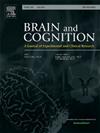大脑体积的增大是否使早期人类面临灭绝的危险?
IF 1.4
3区 心理学
Q3 NEUROSCIENCES
引用次数: 0
摘要
大脑体积的增大是人类进化的一个标志。虽然更大的大脑提供了由社会和认知适应驱动的进化优势,但它也带来了相当大的能量、代谢和体温调节成本。因此,大脑的大小可能有生物学上的限制,在极端环境变化时期施加生存压力。在这里,研究人员分析了整个人属的绝对大脑大小的时间趋势,重点关注了大约30万年前开始的明显放缓的增长。结果表明,早期人类大脑扩张的强烈定向选择之后,在后来的人群中向稳定选择转变。冰川期和间冰期的比较表明,在过去10万年变暖的间冰期,大型大脑的生理成本可能变得特别不利,潜在地增加了灭绝风险。这一进化转变与认知和文化创新的出现不期之合,比如符号工具和语言,它们可能使认知卸载成为可能,减少了持续脑化的选择压力。总之,这些发现支持了一种假设,即稳定的选择,部分由行为和技术适应介导,缓冲了后来的人类群体与大大脑相关的生态和生理成本。本文章由计算机程序翻译,如有差异,请以英文原文为准。
Did increasing brain size place early humans at risk of extinction?
Increasing brain size is a hallmark of human evolution. While a larger brain offers evolutionary advantages driven by social and cognitive adaptations, it also imposes considerable energetic, metabolic, and thermoregulatory costs. As a result, brain size may have biological limits that impose survival pressures during periods of extreme environmental change. Here, temporal trends in absolute brain size across the genus Homo are analyzed, with a focus on a marked slowdown in growth beginning around 300,000 years ago. The results suggest that strong directional selection for brain expansion in early Homo was followed by a shift toward stabilizing selection in later populations. Comparisons across glacial and interglacial periods indicate that the physiological costs of large brains may have become especially disadvantageous during warming interglacial periods in the last 100,000 years, potentially increasing extinction risk. This evolutionary shift coincides with the emergence of cognitive and cultural innovations—such as symbolic tools and language—that may have enabled cognitive offloading, reducing selective pressure for continued encephalization. Together, these findings support the hypothesis that stabilizing selection, mediated in part by behavioral and technological adaptations, buffered later Homo populations against the ecological and physiological costs associated with large brains.
求助全文
通过发布文献求助,成功后即可免费获取论文全文。
去求助
来源期刊

Brain and Cognition
医学-神经科学
CiteScore
4.60
自引率
0.00%
发文量
46
审稿时长
6 months
期刊介绍:
Brain and Cognition is a forum for the integration of the neurosciences and cognitive sciences. B&C publishes peer-reviewed research articles, theoretical papers, case histories that address important theoretical issues, and historical articles into the interaction between cognitive function and brain processes. The focus is on rigorous studies of an empirical or theoretical nature and which make an original contribution to our knowledge about the involvement of the nervous system in cognition. Coverage includes, but is not limited to memory, learning, emotion, perception, movement, music or praxis in relationship to brain structure or function. Published articles will typically address issues relating some aspect of cognitive function to its neurological substrates with clear theoretical import, formulating new hypotheses or refuting previously established hypotheses. Clinical papers are welcome if they raise issues of theoretical importance or concern and shed light on the interaction between brain function and cognitive function. We welcome review articles that clearly contribute a new perspective or integration, beyond summarizing the literature in the field; authors of review articles should make explicit where the contribution lies. We also welcome proposals for special issues on aspects of the relation between cognition and the structure and function of the nervous system. Such proposals can be made directly to the Editor-in-Chief from individuals interested in being guest editors for such collections.
 求助内容:
求助内容: 应助结果提醒方式:
应助结果提醒方式:


